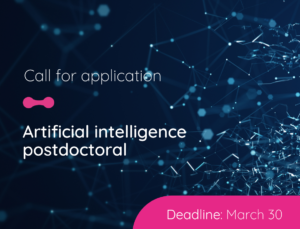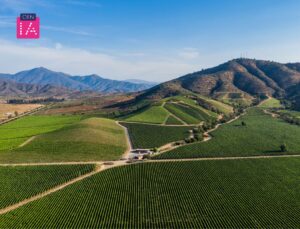
Researchers from the National Center for Artificial Intelligence (Cenia) seek to develop technological solutions for Chile capable of detecting, in time, the origin of forest fires, and in this way contribute with information that allows a better management of emergencies. To this end, the group led by Dr. Cristian Buc has initiated a collaboration with a French non-profit organization, which in turn is responsible for the design of a system based on “AI” for the timely detection of smoke signals in the initial stages of the fires. This system has the particularity of being much cheaper than other solutions in the market, and therefore can be scaled at a national level. The researcher said that his purpose is to collaborate with eventual innovative solutions to the problem. “The technologies exist and we are already in contact with specialists who have spent many years developing methodologies that work at a good level and at a very low cost. Our goal is to find a local collaboration to materialize the idea, which could provide relevant information for better decision making by the authorities in emergency situations.”
This organization is Pyronear, a French “non profit” association created for the purpose of forest conservation, which has created and perfected an early detection system using “computer vision” methods. The cost of the technology developed in the European country is up to 100 times less than its competitors in the market. Computer vision is a field of artificial intelligence (AI) that allows computers and systems to obtain meaningful information from digital images, videos and other visual inputs, and take action or make recommendations based on that information. It is one of the hottest fields of this technology, pillar of the “fourth industrial revolution.”
If AI allows computers to think, computer vision allows them to see, observe and understand. It works in a similar way to human vision, although it clearly does not rely on nature, but on a deep understanding of the environment through the training of algorithmic models with data. The idea is to design a local model that operates on two axes: proactive and reactive, explains Dr. Buc, from Cenia. “Our goal is to have an application that supports the authority’s management during fires, providing information from three levels in which we can have influence, detecting the incident before it starts, and then predicting where it will move, with meteorological, satellite and even social network data. Basically, it is using information at three levels, in order to have a holistic response to emergencies.”
Between 2015 and 2016, more than 570,000 hectares of land were burned in Chile, and the large fire that took place in February (which crossed four regions) alone exceeded 250,000 hectares. A classification by the National Forestry Corporation (Conaf) states that there are four groups of causes of forest fires: accidental, intentional, natural and of unknown cause. According to the state agency, humans are mainly responsible for the fires: 99% of them are started by carelessness or negligence in handling heat sources, or by agricultural practices or intentionality, originating from different types of motivations, including crime. Despite this, current climatic conditions mean that these emergencies, regardless of the nature of their origin, quickly get out of control.
Fire and climate change
Scientific evidence points to a close relationship between climate change and fire-related emergencies, due to factors such as temperature increases, changes in rain and snow patterns, changes in plant communities and other similar alterations. The last fire, for example, devastated in just five days what would typically burn in two years.
When it comes to the early detection of these phenomena, artificial intelligence-based technology has not yet begun to play a major role. Pyronear, a non-governmental organization that also uses deep learning technology for forest preservation, has one of the most innovative tools in the field. This is based on three axes: first, surveillance through cameras installed on towers; image processing, analyzing visual clues; and the generation of automatic alerts. In Chile, according to Cenia’s analysis, there are several advances to be developed prior to the materialization of a project of this magnitude and that would allow the implementation of a solution that takes French technology as a reference. The first of these is connectivity. “The place where you detect the signal needs a network connection, which is already a problem,” says Dr. Buc.
Secondly, the data: the effectiveness of the system requires in-depth training that is able to discriminate between “false positives” and potentially destructive fire sources. AI models depend on data, but in order to move forward in this, the collaboration with the European firm will make it possible to overcome this possible gap, in addition to having the diagram of the services that they already have installed.
Hence, the third barrier would be cost. The project would require cameras with between 10 and 20 kilometers of coverage, which are the ones that would be integrated with the system developed in collaboration between Cenia and the European firm. In this regard, due to its non-profit status, the agreement with Pyronear would help to significantly reduce costs. “The problem is not so much covering the territories with cameras, but the combination of the three factors, and that this allows us to have data with sufficient quality to train the models. The development of this technology depends on that,” says the researcher from the Chilean research organization. Indeed, solutions based on computer vision require analyzing data over and over again until it is able to establish distinctions and recognize images.
Solutions of this type are used in industries ranging from energy and utilities to manufacturing and automotive, and the market continues to grow. According to IBM, it is expected to reach USD 48.6 billion by 2022. For example, to train a computer to recognize automobile tires, it needs to receive large numbers of images of tires and tire-related items to learn the differences and recognize this item without making mistakes.
Reactive and productive models
Dr. Buc specifies that the first axis of the project, the one with these cameras, is the proactive one. The equipment would operate by rotating 360 degrees permanently, taking photos and sending them to a central level. Ultimately, the system could operate as a tool for alerts, and not for transmission via streaming, for example, due to connectivity difficulties. “Through this network of cameras, smoke signals could be detected, and it could be determined that a fire is starting in a certain geolocation and water can be pumped in so that the emergency does not spread and the fire gets out of control. In short, it is a smoke signal detection model combined with cameras located in strategic positions.”
Another milestone of interest in the development of this project is the recent release by Google of a set of satellite data for the training of predictive models. This would be fundamental for the second axis of the initiative that Cenia seeks to promote: the prediction of how the fire will move, depending on environmental or meteorological parameters, such as wind direction, forest location or temperature. The system could also be fed with images sent by the citizens themselves through the geolocation of social networks, something that is already used in other applications, in order to analyze the structural damage of environmental disasters. “The idea is that the authority can take this information and have information to mobilize resources and make better decisions,” summarized the Cenia researcher.
Technology to combat the global crisis
Artificial intelligence is expected to play a fundamental role in the management of the great challenges of this century, among them, perhaps the most relevant, the climate crisis. According to a report by the United Nations Intergovernmental Panel on Climate Change, this represents an enormous risk for Chile, as it is among the 10 countries most vulnerable to the effects of the crisis (it meets seven of the nine criteria established as a threat). In fact, it is already suffering from a mega-drought of enormous proportions, one of the most serious on a global scale, and one of the main factors for the spread of disasters. In fact, 72% of Chile’s surface area suffers from some degree of drought. 156 of the country’s 345 municipalities are at risk of desertification, a threat that could affect more than six million inhabitants (38% of the population). “We are in contact with scientists who have the knowledge and we, for our part, have the capacity to implement it, in addition to developing models that are optimal for the operation of the technology according to Chile’s situation. We are trying to mobilize the topic, seeking support from public resources as well as from the private sector, or possibly a collaboration between the two,” said Dr. Buc.
The National Center for Artificial Intelligence is an organization supported with public resources provided by the National Agency for Research and Development (ANID) that was born with the mission of being a hub to position Chile as the main Latin American reference in AI. In its first year of existence, it has promoted seven high impact projects with various public and private organizations. The entity, fostered as a basal center of excellence and with alliances with nine universities and ten local companies, commemorates its first year of existence with more than one hundred high-level scientific publications and almost a dozen collaborative projects in the discipline, both in the public and private sectors.
By: Luis Francisco Sandoval. Agencia Inés Llambías Comunicaciones.







